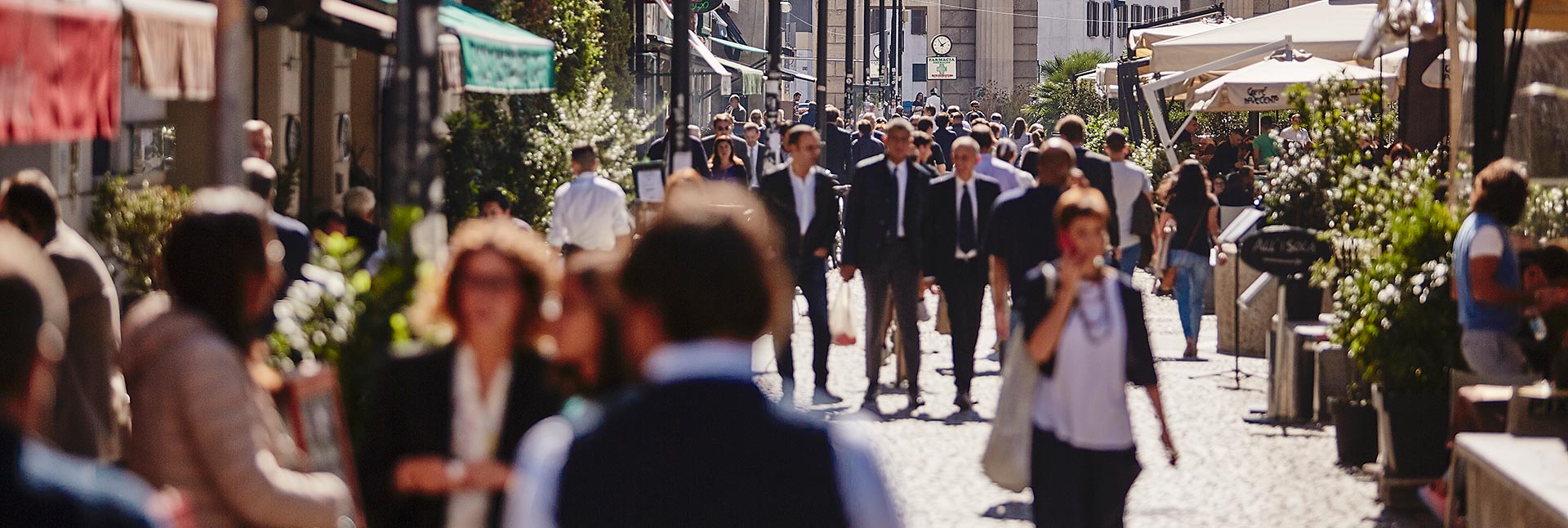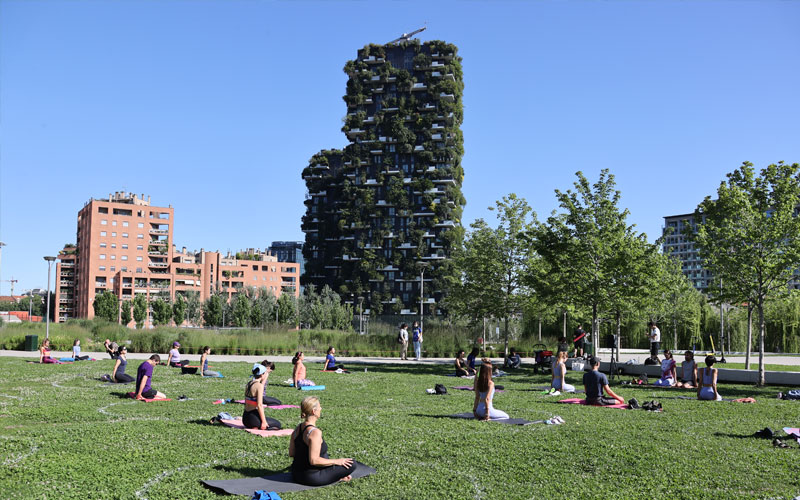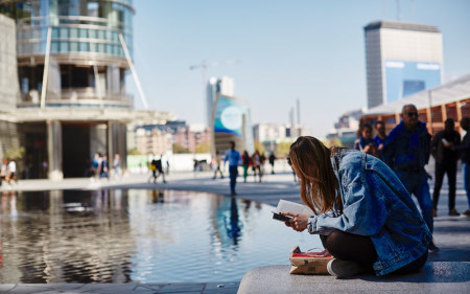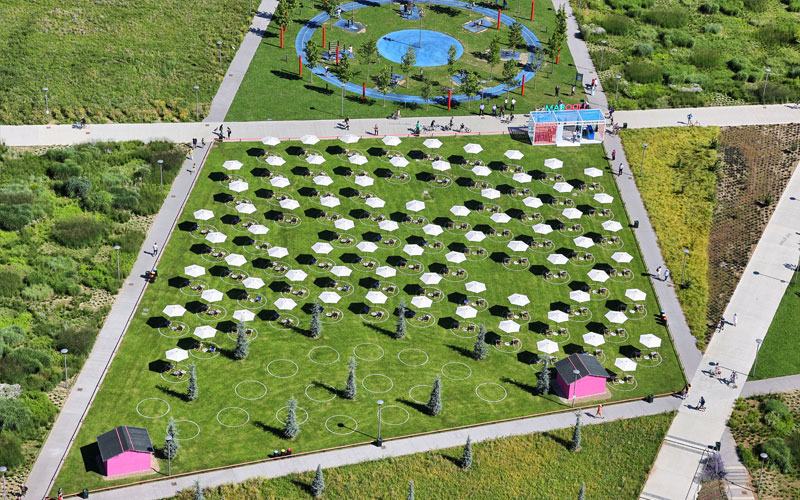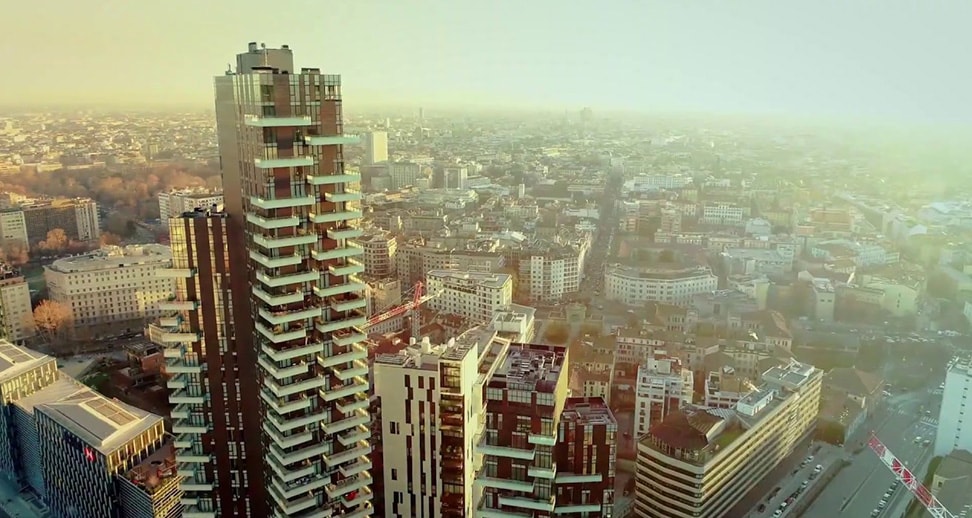“I remember the area well in the ‘90s. When the bulldozers arrived, we had to be a bit patient, but we soon started dreaming,” says Laura D., who has lived in Corso di Porta Nuova since she was a child.
“Dreaming” is a term that is not normally associated with great building transformations, which are often accompanied by an initial phase of settlement, such as the one in the north-western area of Milan in the last few years.
Laura’s expression should not come as a surprise: imagination, ability to think outside the box, and the centrality of people are ingredients for creating a city that looks to the future. This is done by taking into account users of built areas, related activities and services.
The Porta Nuova redevelopment transformed the old railway by redesigning the area with a mix of urban greenery, social and cultural spaces and sustainable buildings. That is why we wanted to assess the transformation’s impact using the personal view of citizens who have experienced the project since its inception 15 years ago.
Laura witnessed these changes, from the difficulties of the post-war period to the evolution into the Varesine, the “Milanese Coney Island” with its different types of people.
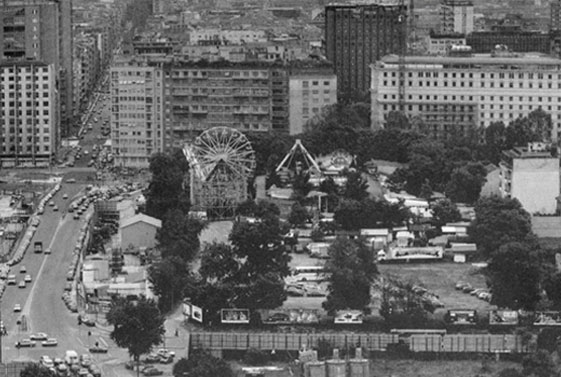
The old Varesine amusements
“I remember the amusement area very well. It was a Milan of yesteryear even if only a few years have passed. It looked separate from the city: merry-go-rounds, sheds and people of all kinds who came for a ride on the Ferris wheel. The change that has most affected residents’ lives was the transformation of the area between Gae Aulenti and the Isola districts. For example, the new Biblioteca degli Alberi gardens, which brought a huge liveability and well-being to the area. Everyone wants to visit it and walk around it – this is very positive. I can't wait for the outdoor activities to start, it will give us breathing space again after these months of lockdown.”
This is a point of view shared by those who live and work in the Porta Nuova area. The Giuntoli family has been running the Pizzeria di Porta Garibaldi in Corso Como for more than 50 years and Claudia is their proud heir.

Corso Como and the Pizzeria di Porta Garibaldi
“We went through the neglect of the '80s and the nightlife boom with clubs and gyms. Today in Corso Como you can find young people gathering outside the clubs, and in Gae Aulenti square where many go for a walk, wandering around shops, bars, restaurants and offices, even during the week.” The transformation of Porta Nuova was a process of great change and a valuable opportunity of relaunching. This was despite its initial transition phase which some businesses had to endure for years before the inauguration of the new buildings and Gae Aulenti square.
“Since the end of the works in Gae Aulenti, tourism and curiosity have increased, and with them our business,” Claudia said. “Visitors have changed, there are less regulars in the neighbourhood and more tourists, many are foreigners, with whom the relationship is necessarily different. But ours is a historic family business that has successfully withstood the changes over time, and we're really proud to be here and tell our story.”
The ability of Porta Nuova to be a new attraction not only for tourists, but for residents of other city areas, is shown in the story that comes from the eyes and heart of an affectionate Milanese citizen, Piero M.:
“I don’t live in the area, but I happen to stop by often when I visit my daughter who lives in Isola. It became a beautiful promenade, in an area of Milan that I hadn't visited since the 90s. This new version of Porta Nuova has made me want to come back – it’s almost like taking a walk in a different city. Now that Milan is spoken about worldwide, the redevelopment of this area has made us a much more contemporary and international city, in step with the great European metropolises.”
There are many aspects to consider when renewing a neighbourhood. “I am a supporter of the works, however, the redevelopment of Porta Nuova and the surrounding areas increased the housing cost and some of the historic area residents have moved,” continues Piero “but I think it is a direct consequence of the supply improvement. We can't complain: my son-in-law has an inherited house in Isola, where he and my daughter live, so we know very well that the real estate market in this area has undergone a considerable price variation, and we benefited from it.”
Ensuring more sustainable access to an increasing number of people is one of the main issues that the Real Estate sector is addressing along with the various city institutions, particularly in Milan with the new development projects in the former railway stations. COIMA sees inclusion as one of the key aspects of its responsible development vision. This is part of the masterplan of the Valtellina area within the adjacent Farini railway station, which will be unveiled this year.
The Isola district, mentioned by Piero, was among those that have benefited the most and positively from the Porta Nuova development, with its new activities and residents. Claudia said:
“Isola is another crucial part of this story. The name alone explains its historical nature as a district isolated from the railway and poorly connected to the surrounding areas. It has gone from being a badly-frequented and rough district to one of the most innovative and bohemian city areas, with special venues, sought-after shops and diverse visitors and one of the most atmospheric parts of Milan. It is a bit like Corso Como used to be.”
An effect closely linked to the objectives of the Porta Nuova building revolution was returning the areas involved in the transformation, and their surroundings, to the citizens and the productive fabric, providing new growth, cultural and economic possibilities, and new spaces designed to be usable by people. As Laura pointed out. “We understood how this project was not intended to build skyscrapers thrown senselessly on the city buthave a strong impact on the urban fabric, and how this could change the neighbourhood’s social life.”
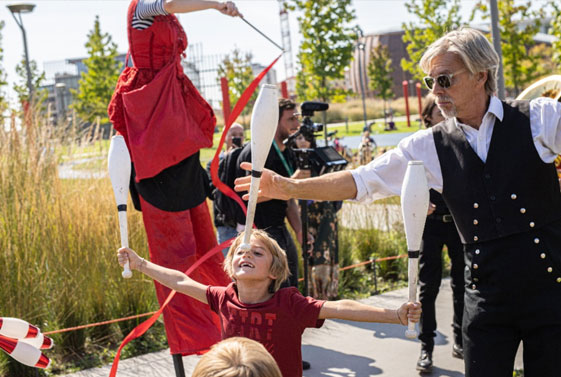
Jugglers invade the BAM streets
Piero analysed a much under-emphasised advantage - the city’s renewed “urban aesthetics,” which enhance its history while cultivating innovation:
“With the ‘new Milan’, I like the alternation between modern buildings and green areas, the skyscrapers in the background and the Biblioteca degli Alberi gardens in front and centre. It is so different from the Piazzale Susa area where I live, because you can see that it is not designed solely as a residential area but combines work, leisure and culture.
The chance to meet other people in dedicated outdoor spaces is a symbol of the Italian spirit that has always distinguished our country and which I hope I can continue to see, thanks to new green areas in my Milan.”

